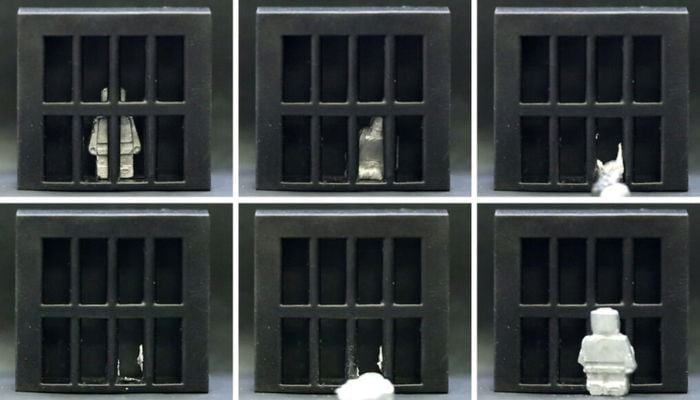VIDEO: Scientists develop 'shape-shifting' robot that can liquefy and reform
Researchers develop material that can switch between liquid and solid states in order to create material that was both strong and flexible
A tiny robot that can melt and rebuild into its former shape has been developed by researchers. This feature enables it to do jobs in confined locations or even escape from prison. The group put its mobility and shape-shifting prowess to the test and published the results in the journal Matter.
While a melting, shape-shifting robot may sound like something from a sci-fi film, the team really took inspiration from the sea cucumber, a marine critter. According to senior author and mechanical engineer Carmel Majidi of Carnegie Mellon University, who was talking to McKenzie Prillaman of Science News, sea cucumbers "can very fast and reversibly modify their stiffness."
“The challenge for us as engineers is to mimic that in the soft materials systems.”
Traditional robots are stiff and heavy, making it difficult for them to manoeuvre in tight locations. While soft robots are more flexible, they are typically weaker and more difficult to manage. So the team developed a material that could switch between the liquid and solid states in order to create a material that was both strong and flexible.
As per a Smithsonian Magazine report, the researchers used a robot composed of gallium, a metal with a low melting point of 86 degrees Fahrenheit, plus magnetic particles to accomplish this feat. These particles allow scientists to utilise magnets to command the robots to move, melt or stretch.
The magnetic particles also cause the robots to react to a changing magnetic field known as an alternating magnetic field. This causes the metal to create electricity, which raises the metal's temperature. According to Majidi, using this magnetic field "you can, through induction, heat up the material and produce the phase shift." The substance then solidifies once more as a result of environmental cooling. The innovation is referred to as a "magnetoactive solid-liquid phase transitional machine" by the research team.
In a series of tests, the new robot was able to climb walls, solder a circuit board, jump up to 20 times its body length, and escape from a mock prison. According to the study, in its solid state, it could hold an object that was nearly 30 times heavier than it.
According to researchers, this technology might have applications in the biomedical industry. They removed a ball from a model human stomach using the robot. The solid robot was able to quickly approach the ball, liquefy, encircle the ball, coalesce back into a solid, and then transport the object out of the model. Although the researchers utilised gallium for this test, the actual temperature of a human stomach is roughly 100 degrees Fahrenheit, which is higher than the metal's melting point. The material's melting point might be increased by adding more metals, according to the authors.
According to Nicholas Bira, a Harvard University robotics expert who was not involved in the project, "It's a fascinating tool."
-
Nature's secret weapon: What are the tiny crabs eating our plastic waste?
-
Why January’s Wolf Supermoon will appear brighter than usual in 2026
-
From Mercury to Neptune: When and where to spot the solar system’s giants in 2026
-
2-billion-year-old galaxy collision reveal dark matter secrets
-
Five space missions that no one can miss in 2026
-
Is Universe doomed to collapse? New dark energy study hints at ‘Big Crunch’
-
Scientists say 'Mercury' should not exist: Here’s Why
-
Asteroid Apophis 2029 flyby: Is Earth in danger?












